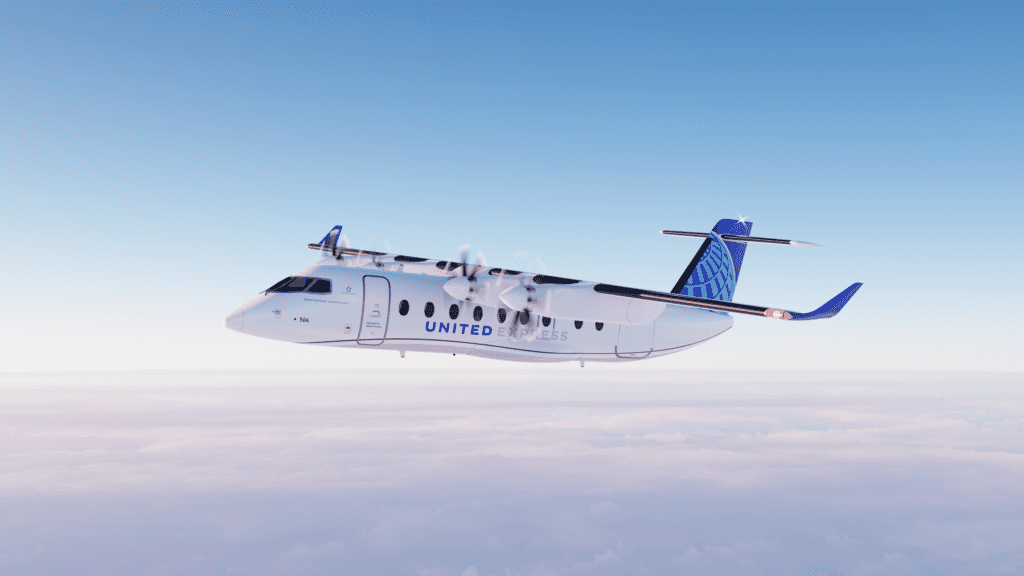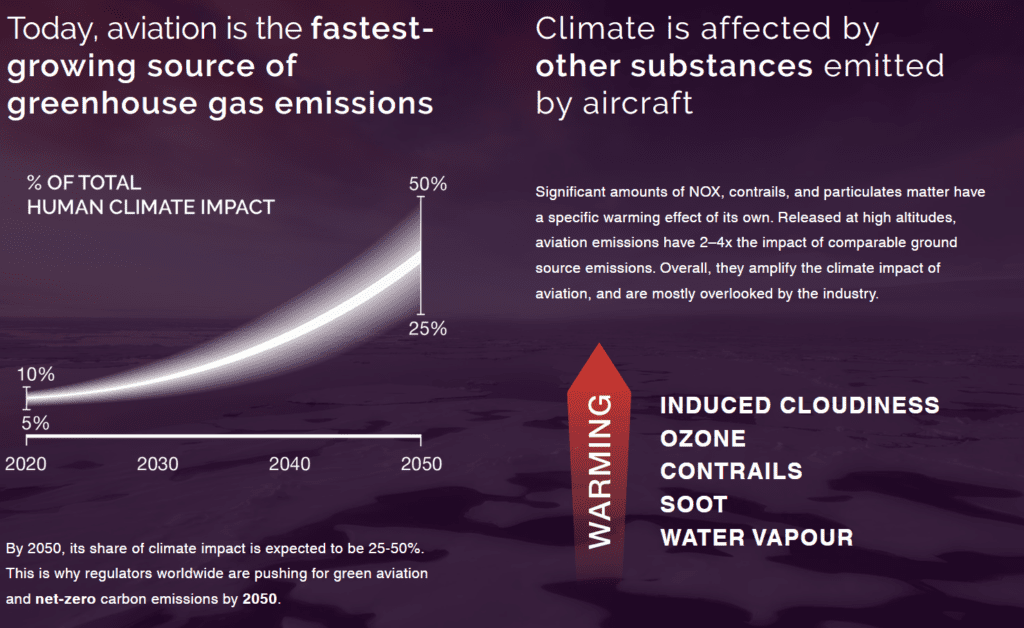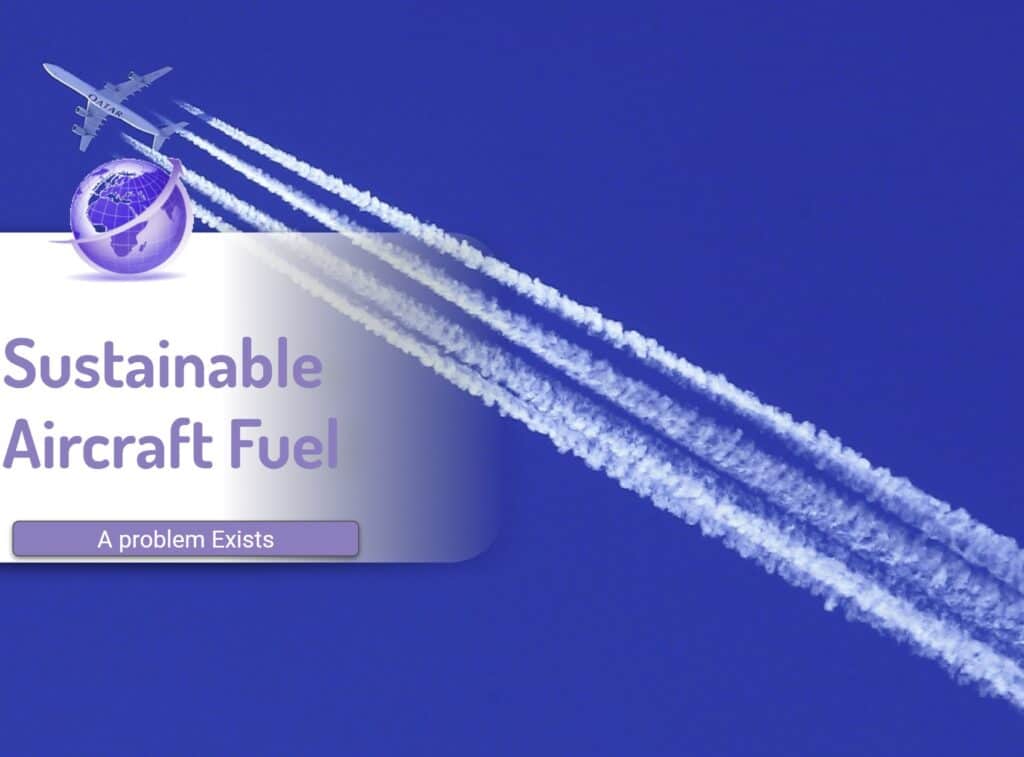Electric airplanes flying soon? They exist now. A race is on to be in broader use much sooner than most appreciate. These startup companies have plans for commercial operations from 2024 onwards. Aviation emissions have doubled since the mid-1980s and account for 2.5% of global carbon dioxide emissions. With the rise in drones, electric vehicles both Europe and US are becoming more ambitious about reaching net-zero emissions as is happening for energy and transportation. Many of these have had major investments during the past 2 years, and they are targeting either short trips or air taxis. Another segment is the drones used for freight, and these are not discussed here.
Rapid Change
The conventional airline industry won’t be disrupted anytime soon. No company has made long term profits. Flights are subject to government and arcane sovereign laws. The industry is a publically sanctioned monopoly. The industry has survived on public funding or control. So what is the rush for electric or other novel fuelled flights? Two reasons: Climate change and opportunity for short-haul air taxi services.
However, as reported by Axios, mass production of electric flying machines began at Burlington, Vermont. BETA Technology conventional & VTOL e-aircraft are being built. The facility is powered by renewable electricity and planning production over 300 e-aircraft per year. Beta is working with the military and cargo operators to open up revenue streams that don’t require regulators to greenlight commercial passenger service.

Success to flight is Fuel energy density
Jet fuel has an energy density of 12,000 Wh/kg and the best Lithium-Ion about 250 Wh/kg. But new battery technologies such as lithium-Sulphur have a 6 to 8 times potential.
Data about Airline Industry
- 4.5 billion passengers took 42 million flights worldwide in 2019
- 115,000 commercial flights every day.
- In USA average regional flight was 780 km (495m). In Europe, 981km.
- There are over 5,000 airports in the USA, and 14,000 private airports and in Europe 350 airports.
- Over 24,000 commercial planes globally plus 3,000 in storage, 10,000 military, and 180,000 light aircraft.
- 70% of flights are less than 1hr long.
- Flights to 1,000 km would be the maximum within the range of current technologies
- Batteries and hydrogen technolgoy and engines are improving in energy and with improvment in range
- Surge in private charters than scheduled flights that may be shorter range.
- Covid has driven more people from city to smaller cities and towns.
Short Haul Vs Long Haul
It is likely the early adopters will be short haul, with a limited number of passengers, from smaller airports or helipads. The challenge of long haul is the density of the fuel and the weight of fuel / battery versus passengers / cargo. Aircraft use 10% of their fuel getting to altitude (eg. 747 uses around 20,000 l (5,000 gal). A Boeing 787-9 burns about 5400 litres of fuel per hour and at cruising speed of 900km/h, equates to 600 litres/100km. So they can hold 126,000 litres of fuel for a range of 15,000km. As they burn the fuel, the weight of plane decreases and efficiency improves. A battery does not decrease. We are seeing test flights of synfuel, but don’t expect much change for decades.
Challenges From Physics of Aircraft
Investors have invested in this segment. Why? What are they looking for?
The Breguet range equation tells engineers how far and airplane can fly given a certain set of parameters, and therefore greatly influences the design of modern jet engines and airframes.
- Return on investment = utilisation rate × margin.
- Downtime for charging means low utilisation. (hence we see some focusing on swap out systems for rapid turnaroun)
- Range for the 19 seater is poor due to low cruise speed – back to Dakota DC3 speeds – and any headwind means worse range.
- Best range less statutory reserve is on 250 km
- Carbon airframe will need to be very strong to pressurise and get out of bumps, or some only fly at low altitude.
- Increased weight = more battery weight as a proportion of aircraft weight – and range will decrease.
Increasing R&D Drives Feasibility
Multiple advancements are driving flight capability.
- Melbourne startup Kite Magnetics (out of Monash University) has just launched its 120 kW electric motor., using nanocrystalline materials technology. These reduces the energy wasted in parts of an electric motor by more than 10 times. This means air cooling even at very high power levels. (from PV-Magazine)
- Battery density is increasing. For Tesla cars, their latest energy density is about 250W/kg, but at Investor Day at Tesla 1/3/2023 Musk reported that Lithium ion can be as high at 450W/kg, although expensive. Expect to see LiS batteries up to 5x more dense.
- A publication from Korea has a density of 869Wh/kg using a complex Lithium cathode with 1000 charges, Li[Ni0.92Co0.06Al0.01Nb0.01]O2 (Nb-NCA93)
Hydrogen Fueled Aircraft
A few manufacturers are looking to hydrogen. Universal Hydrogen’s 40-passenger hydrogen electric plane completed its maiden flight in Feb 2023. Within weeks of experimental approval from FAA, a single H2 engine on Dash 300 test bed flew for 15 minutes. They have a further 2 years of developing a fully capable plane. Connect Airlines has secured the first US order to convert 75 ATR 72-600 planes to Universal Hydrogen powertrains with the purchase rights for 25 more. They intend to use modular freight containers for the H2 tanks.
Whats the probability of success? Unknown. Latest update from New Atlas here (https://newatlas.com/aircraft/megawatt-liquid-h2-powertrain-aviation/)
Cost of E-Kerosene.
The cost of synfuel is likely to be uncompetitive. According to Michael Barnard in his article ICCT’s Hydrogen For Aviation Perspective Is Deeply Wrong As Well

Full List of Aircraft
A great list of electric aeroplanes flying soon is on Future Flight Website. They range from small drone light planes to large ones, but we focus on the ones that appear to be serious and likely to in use by 2025 through 2030. Many of the large drone-like planes will be for local deliveries.
Electric Aiplane Announcements
| Company | Focus | Current Status | Flying Date | Notes | Website |
|---|---|---|---|---|---|
| Boeing / Wisk Aero | Air Taxi | 5 Generation | 2024 | Autonomous, 12 rotors,vertical lift NZ Air Taxi service | Wisk Aero Boeing Investment |
| Airbus | Air Taxi Hydrogen | Various | 2023 | Range of initiatives | Airbus History of Electric |
| Airflow | Small mixed | protoptype | 2025 | 500 mile, 9 passengers, 850kg cargo Short takeoff with both wheels and floats. Partner with PlugPower H2 fuel cell propulsion | Airflow Aero 2019 |
| Beta Technologies | E-VTOL Alia 250C Cargo 650kg Range 250miles | prototype | 2024 | Have number of customers including UPS (150 units), US AirForce, and organ transfer | ALIA BETA electric plane |
| Heart Aerospace | ES-19 Swedish regional airlines | propotype | 2026 | 19 pax, 250 miles NZ purchases, United Express | Heart Aerospace |
| Wright Electric | BAe146 + 4 x E-engines 1 hour flights 100 person Target 1hr from London | testing to 2023 | 2026 | Add Wright’s 10x 2MW electric to std BAE146 By 2030, new plane | Wright Electric |
| Universal Hydrogen | Conversion to H2 Connect Airlines | prototypes | 2022 | Modular H2 capsule + electric power Use modular cargo equipment to refuel. Fortescue Future Industries and UH2 agreed to use FFI green hydrogen ATR maybe a partner. | Universal Hydrogen Los Angeles |
| Vertical Aerospace | UK Seraph | First flight 2019 | 2024 | , wing and rotor for 100miles 4 pax, 2 engine Lithium ion batteries | Vertical Aerospace |
| ZeroAvia | 10 to 20 seat 600kW | prototype flying 2022 full size | 2025 | Alaska Airlines, ASL Aviation Holdings and Mitsubishi Heavy Industries Regional Jet division. ZeroAvia has secured more than 460 committements | ZeroAvia renewable Hydrogen |
| Odys Aviation | VTOL 9 pax | Prototype flying | 2025 | Using city airports and helipads for 1 hour flights. Max speed 345 mph (555 km/h), range of 1,000 miles (1,609 km), cruise altitude of 30,000 ft (9,144 meters). | Odys Aviation, previously Craft |
| Volt Zero | Safran | Prototype 5-12 people | 2023 | Prototype was 2x45kw and now up to 150kw | Volta Aero |
| Dovetail Aero | Conversion | Early stage | no date | Sydney Aviation Holdings (owner of Sydney Seaplanes) and Dante Aeronautical. | Dovetail Aero Australia |
Aircraft Images
The gallery below show the more conventional short and medium range small commuter planes. Alia 250 from Beta recently flew a 2,257km trip over 8 days. It took off from New York and landed a total of 7 times to recharge. The plane made its final stop in Bentonvile, Arkansas, traveling a total of 2,257km. The flight legs ranged from about 255 to 340 kilometres, with an average flight time of around 88 minutes. In total the aircraft was in the air for nearly 12 hours. (Goodnewshub)













OECD View of Airlines
The history of airlines in OECD countries is full of examples of both privatisation and nationalisation. There were mostly established as private companies, but were in many cases at some point in their history wholly or partially nationalised – either in order to stave off their collapse, or for more ‘ideological’ reasons to establish state control over sectors of strategic interest. As of today, relatively few airlines are 100% state owned. Where it occurs it is mostly either because they are so heavily lossmaking that private investors cannot be attracted, or because they are tasked with overriding public policy objectives (e.g. assigned a role in national development strategies).
Today, in most OECD countries a national airline tends to be either privately owned, or a listed company in which the state holds a sufficiently high stake to either effectively exercise control or to block unwanted decisions by the other shareholders. The latter model has the advantage, from the viewpoint of governments, of combining continued state influence with a higher efficiency arising from subjecting the companies to the rigours of stock-market rules and having more easy access to raising capital
OECD https://www.oecd.org/competition/airlinecompetition.htm
What are Emissions?
Significant amounts of NOX, contrails, and particulates matter have a specific warming effect of its own. Released at high altitudes, aviation emissions have 2–4x the impact of comparable ground source emissions. Overall, they amplify the climate impact of aviation, and are mostly overlooked by the industry.

Range Calculation
In the article by Clean Technica they point out that there is a formula for range and batteries and raise the issue of realistic range.


Eviation announced a major redesign of the 9-passenger Alice in 2021. The battery stores 820 kWh and weighs 3720 kg, implying a specific energy of eb = 220 Wh/kg
In contrast, Tesla has an eb = 160 Wh/kg. The new 4680 cell, due in 2022 is aiming to achieve 380 Wh/kg at the cell level, which could mean that (allowing for framing, wiring, and cooling) 240 Wh/kg at the pack level is achievable.
CleanTechnica points out that this gives the 9-passenger Alice, with a whopping 58.6% of its mass taken up by batteries, a range of 658 km (409 miles) but 30 minutes is a required additional minimum safety range.
Eviation is claiming an empty weight of 1530 kg, to be achieved through the use of composites. There is only one small jet currently flying using composites, the 6-passenger Hondajet. It has a composite fuselage, aluminum wings, and an empty weight of 3379 kg. Eviation is aiming for less than half that weight.

Latest Industry Review from ICCT
The energy efficiency and zero-emission benefits of electric aircraft merit their adoption for short-hop commuter flights (9-19 passengers for < 200 km) wherever feasible. For example, short-hop flights are responsible for a disproportionate amount of local pollution from aircraft, so electric aircraft, which are zero-emission, could contribute to cleaner air in some regions.
International Council on Clean Transportation. What to Expect with electric Planes
Battery is Key
CATL has announced a 500kW/kg battery which doubles the range in mid 2023 and CATL claim their new battery technology is 1.5 times more energy dense than Tesla’s most advanced 4680 cells.
More Reading
- Batra, A.; Raute, R.; Camilleri, R. On the Range Equation for Hybrid-Electric Aircraft. Aerospace 2023, 10, 687. https://doi.org/10.3390/aerospace10080687
- CATL Announces New Batteries That Are So Energy Dense, They’ll Make Electric Planes Possible CarScoops





